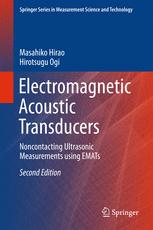

Most ebook files are in PDF format, so you can easily read them using various software such as Foxit Reader or directly on the Google Chrome browser.
Some ebook files are released by publishers in other formats such as .awz, .mobi, .epub, .fb2, etc. You may need to install specific software to read these formats on mobile/PC, such as Calibre.
Please read the tutorial at this link: https://ebookbell.com/faq
We offer FREE conversion to the popular formats you request; however, this may take some time. Therefore, right after payment, please email us, and we will try to provide the service as quickly as possible.
For some exceptional file formats or broken links (if any), please refrain from opening any disputes. Instead, email us first, and we will try to assist within a maximum of 6 hours.
EbookBell Team

4.4
12 reviewsThis second edition provides comprehensive information on electromagnetic acoustic transducers (EMATs), from the theory and physical principles of EMATs to the construction of systems and their applications to scientific and industrial ultrasonic measurements on materials. The original version has been complemented with selected ideas on ultrasonic measurement that have emerged since the first edition was released.
The book is divided into four parts:
PART I offers a self-contained description of the basic elements of coupling mechanisms along with the practical designing of EMATs for various purposes. Several implementations to compensate for EMATs’ low transfer efficiency are provided, along with useful tips on how to make an EMAT.
PART II describes the principle of electromagnetic acoustic resonance (EMAR), which makes the most of EMATs’ contactless nature and is the most successful amplification mechanism for precise measurements of velocity and attenuation.
PART III applies EMAR to studying physical acoustics. New measurements have emerged with regard to four major subjects: in situ monitoring of dislocation behavior, determination of anisotropic elastic constants, pointwise elasticity mapping (RUM), and acoustic nonlinearity evolution.
PART IV deals with a variety of individual issues encountered in industrial applications, for which the EMATs are believed to be the best solutions. This is proven by a number of field applications.